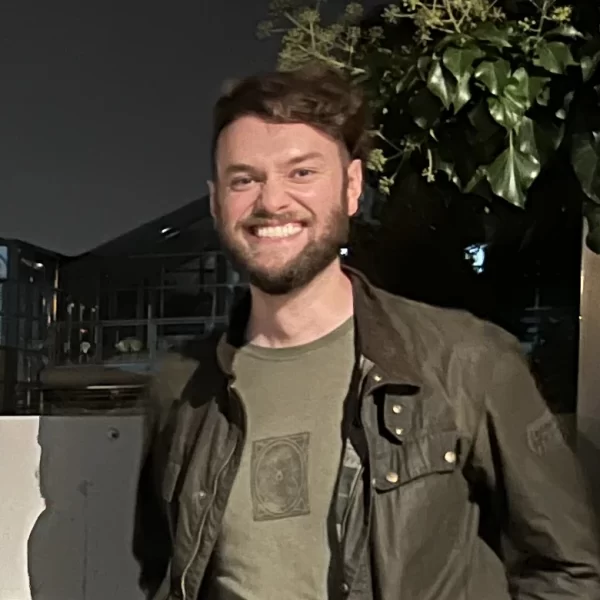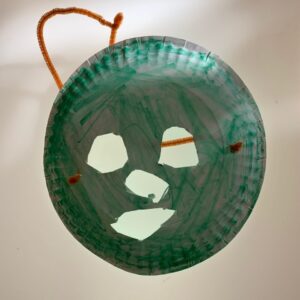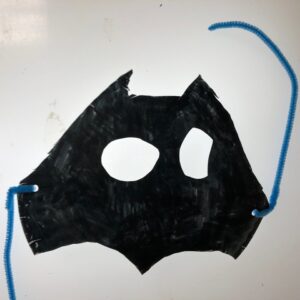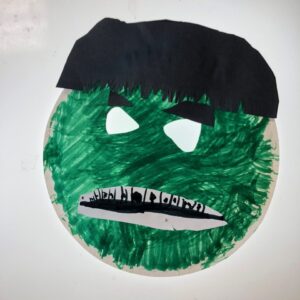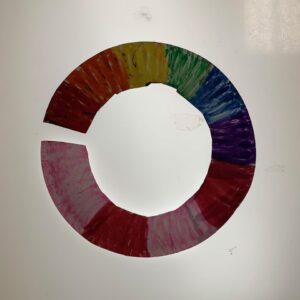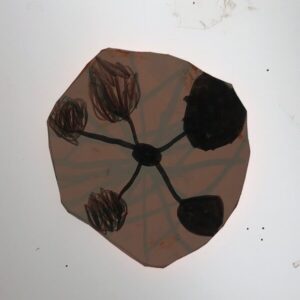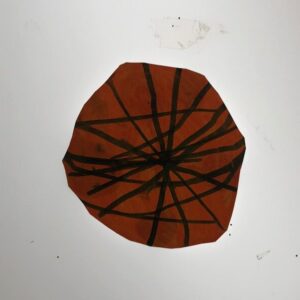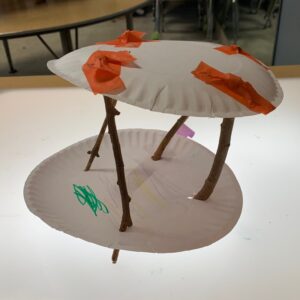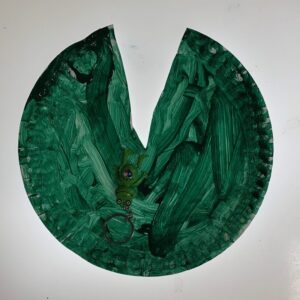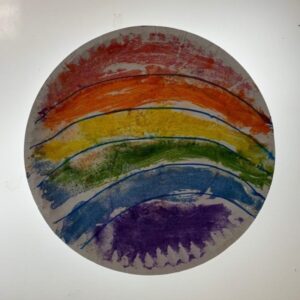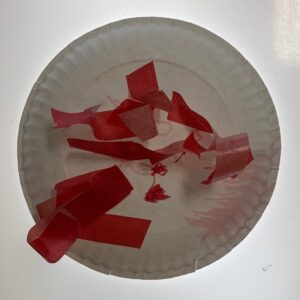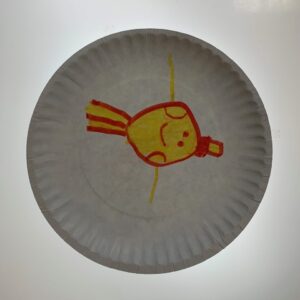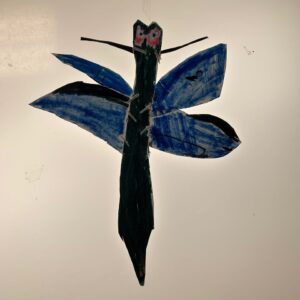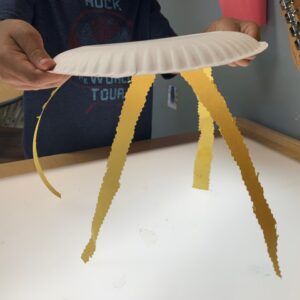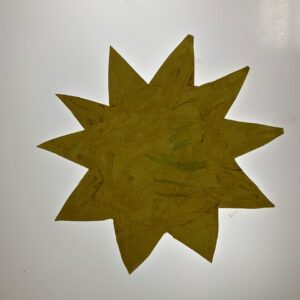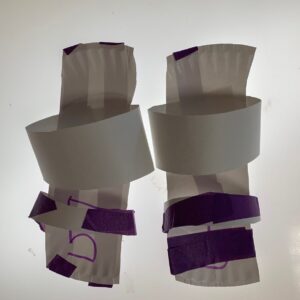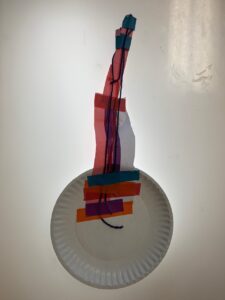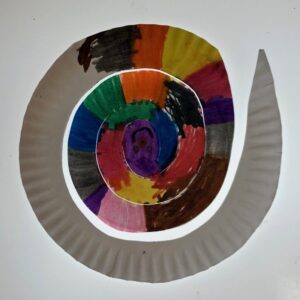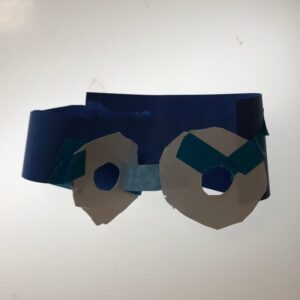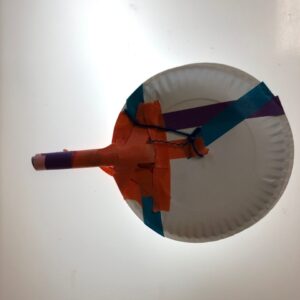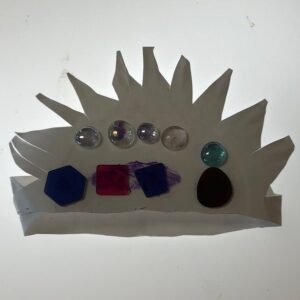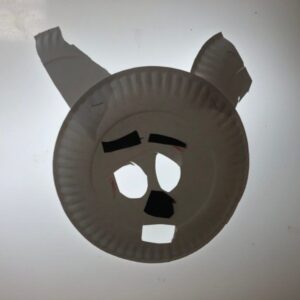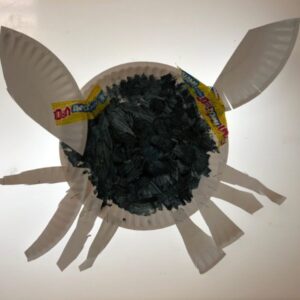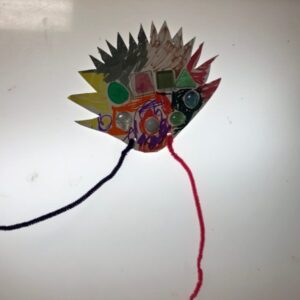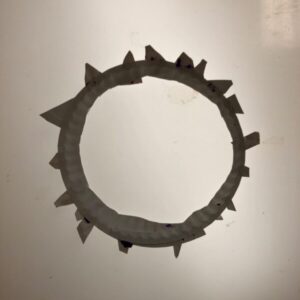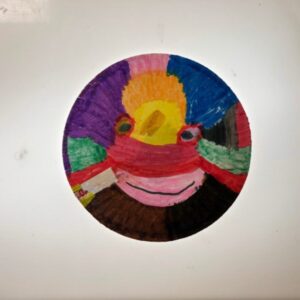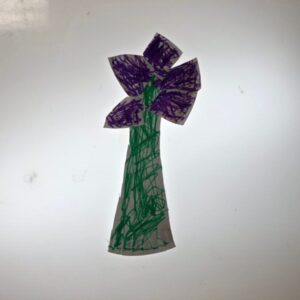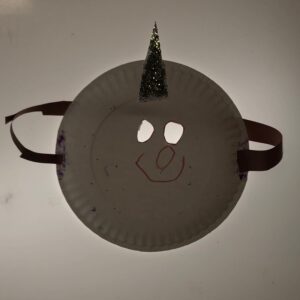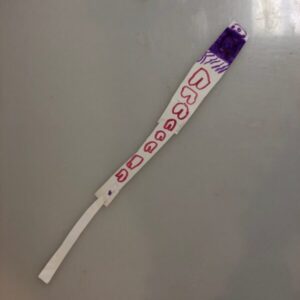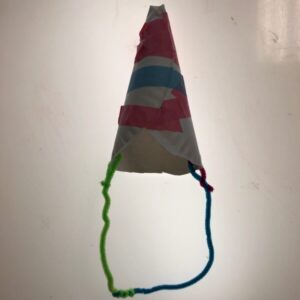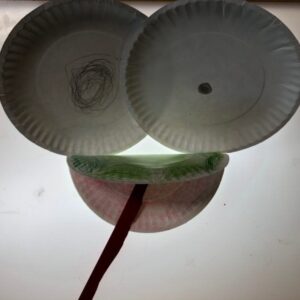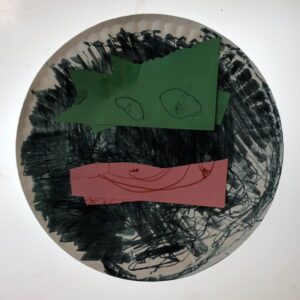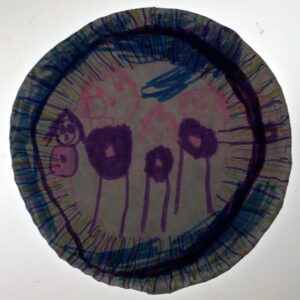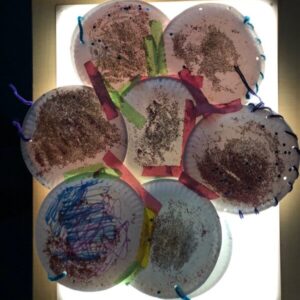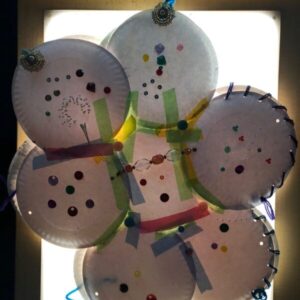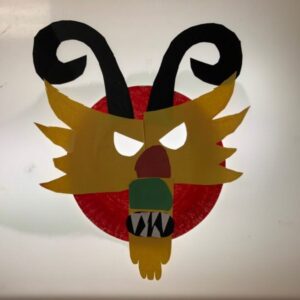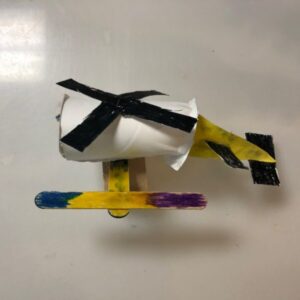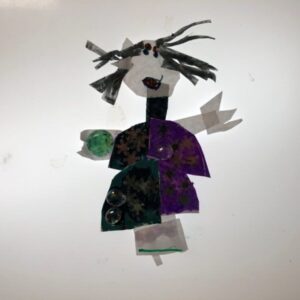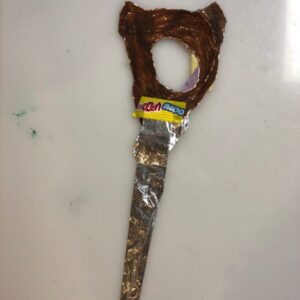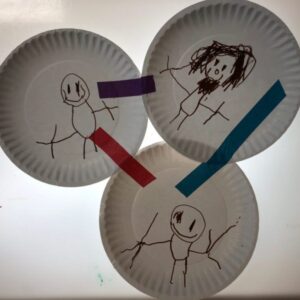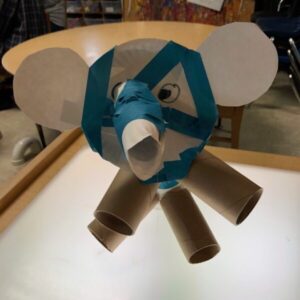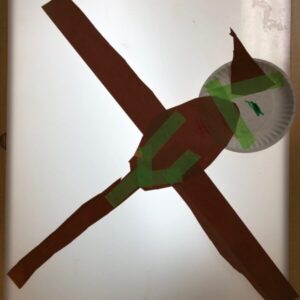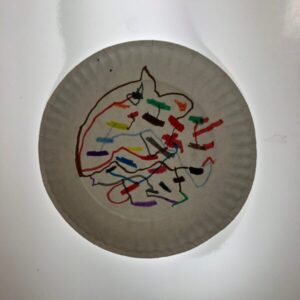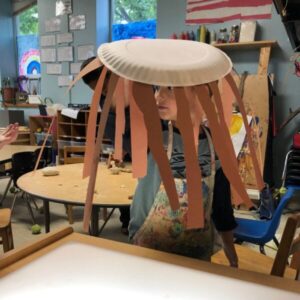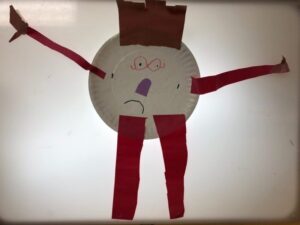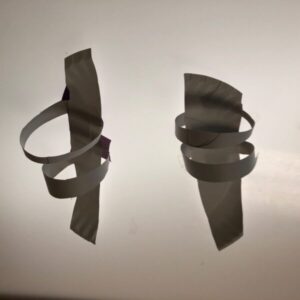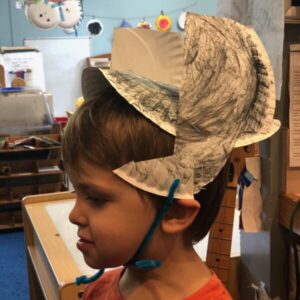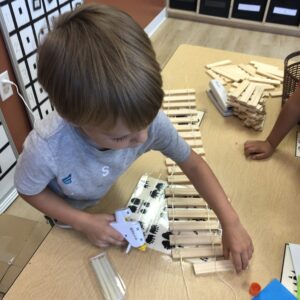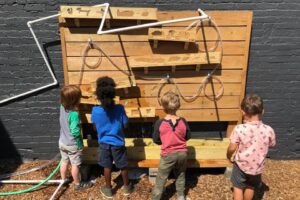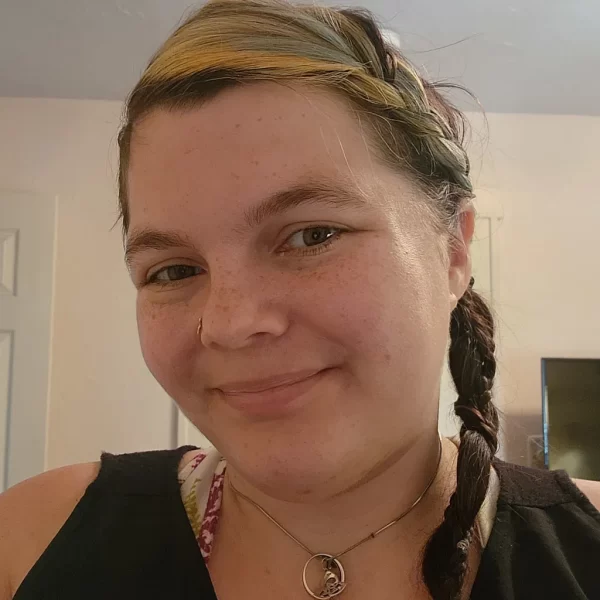Observation and Documentation
One day Max brought a paper plate mask from home. It was something that he had created as part of an activity at a birthday party he attended over the weekend.
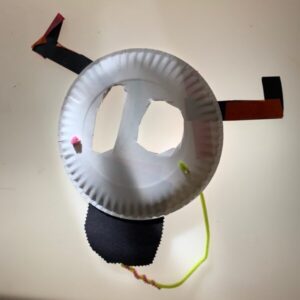
Later on in the day I observed four kids sitting around the table in our mini atelier with Max – they were all requesting their own plates. After we supplied them with the plates they begin their work and under Max’s tutelage they all started to create their own paper plate masks. Several others soon began to join them and just as Max had shown the original group how to make the mask they began to assist the newly interested group.
Over the course of the week we observed many different masks being created, but that was it – it was only masks.
Hypothesis and Reflection
Curious about whether the children considered making anything else I decided to share my observations with the class and in our meeting I decided to discuss the broad topic of plates to simply see how much they know about the subject;
What is a plate? – “something you eat from”,
How do you know something is a plate? – “it’s white”, “it’s a circle”,
What can you do with a plate? –
“eat from it”
“make a frisbee”
“make a mask”
“make a tiger or a lion”
“make the evil Incredibles robot!”
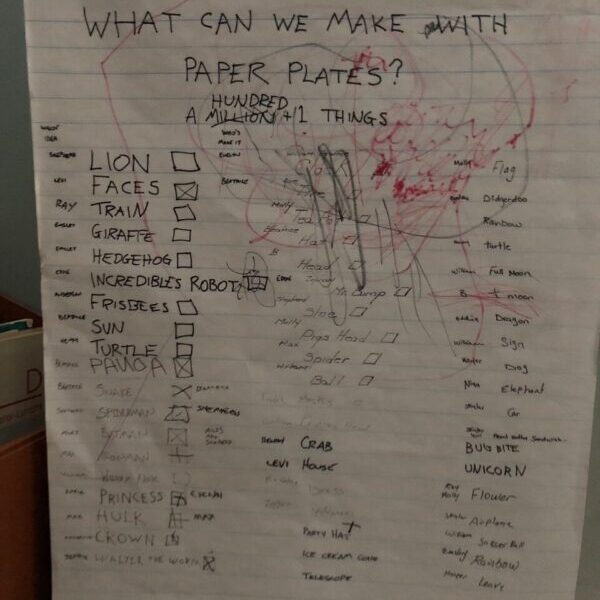
Once we had opened a dialog about plates they realized that the possibilities of the simply paper plate were endless. They set themselves a target for how many different items they could make. One million someone suggested. NO!! one million and one was the next response. This led to a short discussion on numbers and I suggested this may be a bit ambitious of an ambitious goal. They then brought it down to one hundred, and then settled on one hundred and one!
Questions and Provocations
In our the meeting we were discussing possible uses for paper plates Eddie thought you could make the robot from Incredibles. I wanted to revisit that with him, firstly, because I had no idea what that looked like and secondly because the atelier is not usually a place Eddie shows an interest.
After asking him what the Incredibles robot looks like he points me to Google. We search Google to find pictures of the robot and the first requirement he has is that it should be colored black. This brings up a discussion about how to turn a white paper plate black. We thought about the different options (paper, markers, paint) and he chose paint.
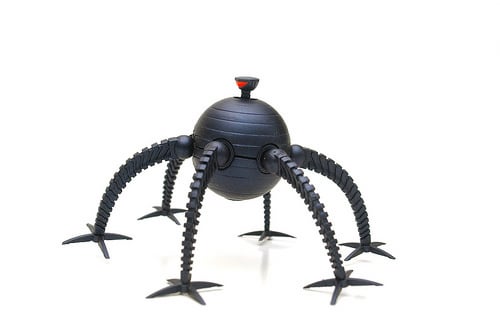
He then asked for some black paper to create the legs. The first I showed to him he said, “that’s not big enough” and he asked me to look at the picture again. I found him a bigger sheet and he told me, “silly goose that is still not big enough!” We then found some even bigger paper that he said was just right!
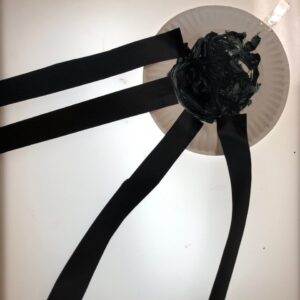
I placed a lot of care on the questions I was asking Eddie during the process. I don’t want to lead him in a certain direction but I want to guide him in a way that he can ask his own questions and then find his own answers. I also don’t want to put a limit on his ideas by saying no to things that he suggested, especially if it wasn’t something an adult should expect a no response to.
Eddie’s incredible robot was the first creation that broke away from making masks and opened the door to countless ideas coming to life!
